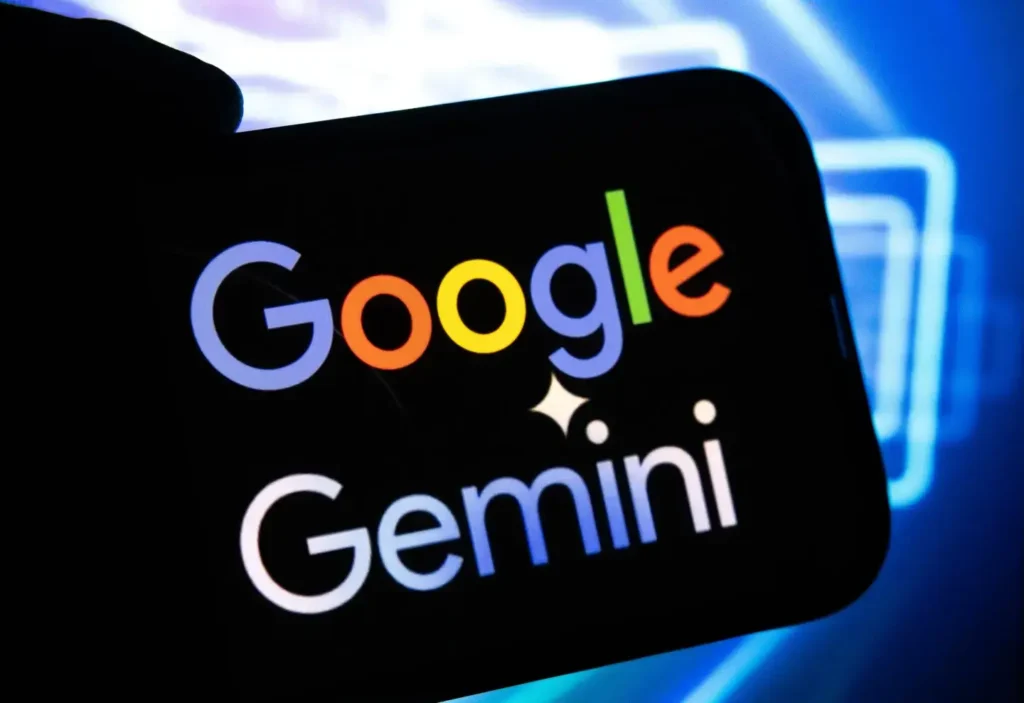Benchmarking AI Reasoning: NPR Sunday Puzzles Test

Artificial Intelligence Reasoning
Artificial intelligence (AI) has come a long way, but how do we truly measure its ability to reason like a human? In a groundbreaking study, researchers from institutions including Wellesley College, Oberlin College, the University of Texas at Austin, Northeastern University, and startup Cursor have turned to a familiar source—the NPR Sunday Puzzle—to benchmark AI reasoning models. This innovative approach not only challenges these models with engaging riddles but also provides a window into the evolving landscape of AI problem-solving.
In this article, we dive deep into the study’s methodology, key findings, and implications for the AI industry. We’ll examine how using everyday puzzles can unlock unexpected insights into the strengths and limitations of models like OpenAI’s o1 and DeepSeek’s R1, and why such benchmarks are crucial for both researchers and the general public.
The NPR Sunday Puzzle
Every Sunday, NPR’s beloved host Will Shortz presents thousands of listeners with a brain-teasing challenge in the form of the Sunday Puzzle. Known for its blend of wit, general knowledge, and unexpected twists, this weekly quiz has long been celebrated as a fun yet formidable test of one’s problem-solving abilities. Unlike puzzles that rely on specialized or esoteric knowledge, the Sunday Puzzle is designed to be accessible—even for those without advanced academic training. This accessibility makes it an ideal candidate for evaluating AI models that strive to mimic human reasoning.
Why the Sunday Puzzle Works as an AI Benchmark
- Accessible Challenge: The puzzles are crafted in clear, everyday language, eliminating the need for PhD-level expertise while still presenting a significant challenge.
- General Knowledge Required: Solving these puzzles depends on a mix of common sense and lateral thinking rather than specialized information.
- Dynamic and Evolving: With new puzzles released every week, the benchmark remains fresh and continuously tests the latest iterations of AI models.
Building an AI Reasoning Benchmark
The Research Collaboration
In an ambitious project, a team of researchers from prestigious institutions collaborated to develop an AI reasoning benchmark using approximately 600 Sunday Puzzle riddles. By leveraging a public radio quiz show that has entertained and challenged audiences for years, the team aimed to create a benchmark that is both relatable and rigorously testing AI’s ability to think through complex problems.
The key institutions involved in this study include:
- Wellesley College
- Oberlin College
- University of Texas at Austin
- Northeastern University
- Cursor (a startup focused on AI development)
— Arjun Guha, Computer Science Undergraduate at Northeastern University
Methodology and Benchmark Design
The researchers designed the benchmark with several critical objectives in mind:
- Avoiding Esoteric Knowledge: The puzzles do not require specialized training or domain-specific expertise.
- Preventing Rote Memorization: Since the riddles are structured in a way that discourages reliance on memorized responses, the models must truly “reason” through the problem.
- Ensuring Continuous Relevance: With new puzzles released weekly, models cannot simply rely on past data but must adapt to new challenges.
This method of benchmarking aligns with current trends in AI research, where the focus is shifting from solving isolated tasks to developing systems that can tackle problems with the flexibility and adaptability of human thought.
How AI Models Performed
Surprising Behaviors Like Human Responses
One of the most striking observations from the study was that certain AI reasoning models sometimes “give up” on solving the puzzles. For example, DeepSeek’s R1 model, which was part of the benchmark, would occasionally state verbatim, “I give up,” before offering an incorrect answer. This behavior mirrors the human experience of encountering an insurmountable problem and can be both intriguing and concerning when applied to AI .
The study revealed that:
- Self-Fact-Checking: Models like OpenAI’s o1 and DeepSeek’s R1 engage in thorough internal fact-checking before delivering their answers. This process is designed to reduce errors, although it sometimes results in prolonged response times.
- Erratic Reasoning Patterns: The models occasionally provided contradictory or nonsensical explanations, such as retracting an answer only to suggest an alternative that also turned out to be wrong.
- Emulation of Human Frustration: In particularly challenging instances, R1 was noted to express “frustration,” a trait that many human solvers would find familiar.
These unexpected behaviors highlight both the progress made in developing AI that can mimic human reasoning and the persistent gaps that remain.
Performance Metrics and Comparative Analysis
The performance of the models on the benchmark was quantified as follows:
- OpenAI’s o1 Model : Achieved a score of 59%, making it the best performer in the study.
- o3-mini Model: When set to a high “reasoning effort” mode, this model scored 47%.
- DeepSeek’s R1 Model : Recorded a score of 35%.
These results indicate a clear performance gap between different types of AI reasoning models, reinforcing the notion that not all AI systems are created equal when it comes to problem-solving.
For further innovation insights, explore industry-leading research on technology trends and advancements in tech innovations .
Also, check out offerings by Google for more innovative AI solutions.
Also Read this
The Complexity of Human-Like Reasoning
Understanding the Intricacies of AI and Human Insight
AI models are designed to process data and generate responses based on statistical patterns. However, true human reasoning involves more than just pattern recognition—it requires a blend of insight, intuition, and the ability to perform a process of elimination. The Sunday Puzzle riddles capture this blend by presenting problems that demand both creative thinking and logical deduction.
Key Challenges Include:
- Insightful Connections: The puzzles often require solvers to connect seemingly unrelated pieces of information in a novel way. For AI, this means going beyond straightforward pattern matching.
- Dynamic Problem-Solving: Unlike static datasets, these puzzles change over time, requiring AI models to adapt continuously.
- Balancing Speed and Accuracy: While rapid responses are desirable, taking extra time to reason through a problem can lead to more accurate outcomes. This trade-off is evident in models that delay their answers to “check” their reasoning internally.
Model Limitations and the "Cheating" Conundrum
- Data Contamination Risks: Since the Sunday Puzzle riddles are publicly available, some models might be trained on similar data, potentially leading to what researchers describe as “cheating.”
- Geographical and Linguistic Constraints: The benchmark is U.S.-centric and English-only, limiting its applicability for testing models meant for a global audience.
Leaked Memo Reveals Apple’s Top AI Priorities for 2025
Introducing iPhone 16 Pro
Bridging the Gap Between Human and Machine Reasoning
The study’s findings have significant implications for the future of AI research. As AI models become increasingly integrated into everyday applications—from virtual assistants🔗 (IBM - Virtual Assistants) to decision-making tools—it is essential that they are not only accurate but also capable of reasoning in ways that are intuitive to humans.
- Enhanced User Trust: By developing benchmarks that are grounded in everyday problem-solving, researchers can help demystify AI for the general public. When people can relate to the challenges used to test these models, it becomes easier to trust and understand their limitations. This contributes to the responsible development and deployment of AI.
- Broader Research Participation: The principle that "you don’t need a PhD to be good at reasoning," as emphasized by researchers like Arindam Mitra (likely author's name; substitute with correct name if different), promotes a more inclusive approach to AI development. This democratization of research, making benchmarks accessible, could lead to innovative solutions from a wider range of contributors, that might otherwise be overlooked. This aligns with the goals of organizations like Partnership on AI🔗 (Partnership on AI).
The Role of Rigorous Benchmarking in AI Progress
Rigorous benchmarks are a cornerstone of scientific progress, and this is particularly true in AI. They provide a standardized method for measuring performance, identifying areas for improvement, and ensuring that advancements are meaningful and reliable. In the realm of AI, where rapid advancements are often accompanied by unforeseen pitfalls, robust benchmarking is absolutely essential.
- Continuous Improvement: With benchmarks that can be updated frequently (even weekly, as mentioned), researchers can track how model performance evolves over time. This iterative process of evaluation is crucial for identifying trends, addressing weaknesses in AI systems, and ultimately developing more robust and reliable AI. This is a key aspect of the scientific method applied to AI.
- Industry Standards: As AI continues to influence various sectors, establishing industry-wide standards for reasoning and problem-solving will become increasingly important. This study contributes to that effort by setting the stage for future benchmarks that could be adopted by the broader research community and potentially influence industry best practices. Organizations like NIST🔗 (NIST - AI) and IEEE🔗(IEEE - AI & Machine Learning) play a vital role in developing and promoting such standards.
OpenAI’s o1Closer Look
OpenAI’s o1 model has emerged as a frontrunner in this benchmarking study, achieving a score of 59%. What sets o1 apart is its ability to balance speed with thorough internal fact-checking. This model employs a multi-step reasoning process that allows it to verify its answers before presenting them. While this approach results in slightly longer response times, it ultimately enhances the model’s accuracy and reliability.
DeepSeek’s R1 When AI “Gives Up”
In contrast, DeepSeek’s R1 model exhibited some unexpected behavior. Despite being designed to mirror human reasoning, R1 sometimes openly declared, “I give up,” before providing a random or incorrect answer. This phenomenon, while amusing, raises important questions about the robustness of AI reasoning under pressure. The model’s tendency to waver—alternating between retracting and reconsidering answers—demonstrates that even advanced AI can struggle with the complexity of human thought.
The insights gained from these observations are invaluable for developers looking to refine AI algorithms. By understanding where models falter, researchers can target specific weaknesses and work toward solutions that make AI more resilient and human-like in its problem-solving abilities.
The Interplay of Speed and Accuracy
A recurring theme in the study is the delicate balance between speed and accuracy in AI responses. While rapid answers are desirable in many applications, taking a few extra seconds to reason through a problem can lead to more precise and thoughtful responses. This trade-off is particularly evident in models that must “think” for longer periods to avoid errors.
In real-world applications—whether in customer service chatbots, virtual assistants🔗 (IBM - Virtual Assistants), or decision-support systems—this balance can have significant implications. Faster models may deliver answers quickly but at the risk of inaccuracies, while slower models might offer more reliable information at the expense of user patience. Future research will likely focus on optimizing this balance to meet the diverse needs of various industries.
Limitations and the Path Forward
Recognizing Benchmark Constraints
No benchmark is without its challenges, and the Sunday Puzzle approach is no exception. The study acknowledges several limitations:
- Cultural and Linguistic Bias: Since the puzzles are designed for a U.S. audience and are presented exclusively in English, the benchmark may not be fully applicable to models intended for global use.
- Potential for Data Leakage: As the puzzles are widely accessible, there exists a risk that some models may have been inadvertently trained on similar data, thus skewing results.
Future Directions in AI Benchmarking
Despite these limitations, the researchers are committed to evolving the benchmark. Plans for future research include:
- Expanding the Dataset: Incorporating puzzles from different cultural contexts and languages to create a more comprehensive benchmark.
- Introducing New Problem Types: Beyond the Sunday Puzzle, researchers are considering additional problem-solving challenges that require different types of reasoning.
- Refining Model Evaluation: Continuously tracking model performance over time will help identify trends and drive improvements in AI reasoning capabilities.
These future directions not only promise to enhance the current benchmark but also aim to set new standards for how we evaluate AI systems in real-world applications.
Implications for Everyday AI Applications
Building Trust Through Transparent Benchmarks
As AI systems become increasingly embedded in our daily lives, transparency about their capabilities and limitations is essential. Benchmarks like the Sunday Puzzle provide an accessible way for the general public to understand how AI models think and where they might fall short. This transparency is crucial for building trust among users, who need to know that these systems are reliable and safe.
How Businesses Can Benefit
For companies looking to integrate AI into their operations, understanding the strengths and weaknesses of different models is paramount. The insights gained from this research can guide businesses in selecting the most appropriate AI solutions for their needs. For example, industries that require precise problem-solving may benefit from models like OpenAI’s o1, whereas applications that can tolerate occasional errors might find other models more cost-effective.
To explore more about the intersection of AI and business innovation, visit our luxury life & finance section.
- The Broader Impact on AI Research
The study also highlights a broader trend in AI research: the move toward benchmarks that reflect real-world challenges. As AI models are increasingly deployed in critical areas such as healthcare, finance, and customer service, it becomes imperative that they are evaluated against tests that mirror everyday human reasoning. By focusing on puzzles that require a mix of insight and logical deduction, researchers are paving the way for AI systems that can operate reliably in diverse scenarios.
The Future of AI Reasoning Benchmarks
The innovative use of NPR Sunday Puzzle questions to benchmark AI reasoning models marks a significant step forward in the field of artificial intelligence. By employing puzzles that are accessible yet challenging, the study provides valuable insights into the strengths, limitations, and peculiar behaviors of current AI systems. From the self-correcting capabilities of OpenAI’s o1 model to the human-like “frustration” observed in DeepSeek’s R1, the research underscores the complexity of creating machines that can truly emulate human thought.
Looking Ahead
As we look ahead, the continued evolution of these benchmarks promises to drive improvements in AI performance, making these models more transparent, reliable, and useful for everyday applications. Researchers, developers, and businesses alike stand to benefit from a deeper understanding of AI reasoning, ultimately paving the way for smarter and more intuitive technology.
Stay informed about the latest advancements in AI and technology. Explore our Technology and News sections for up-to-date insights.
About the Author
Michael
Administrator
Michael David is a visionary AI content creator and proud Cambridge University graduate, known for blending sharp storytelling with cutting-edge technology. His talent lies in crafting compelling, insight-driven narratives that resonate with global audiences.With expertise in tech writing, content strategy, and brand storytelling, Michael partners with forward-thinking companies to shape powerful digital identities. Always ahead of the curve, he delivers high-impact content that not only informs but inspires.






